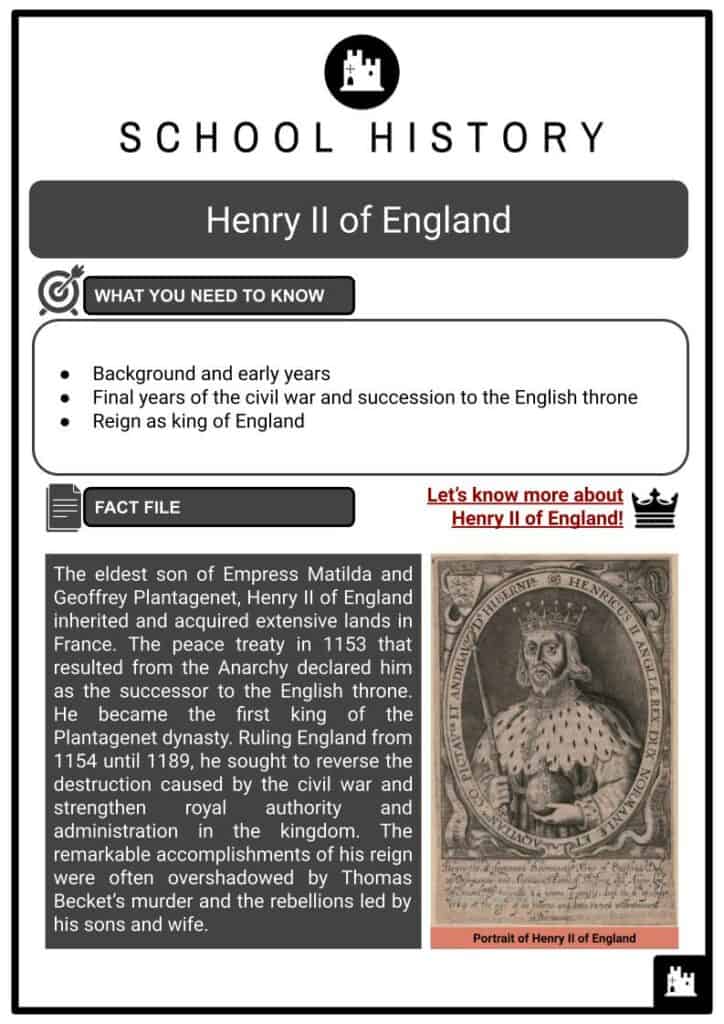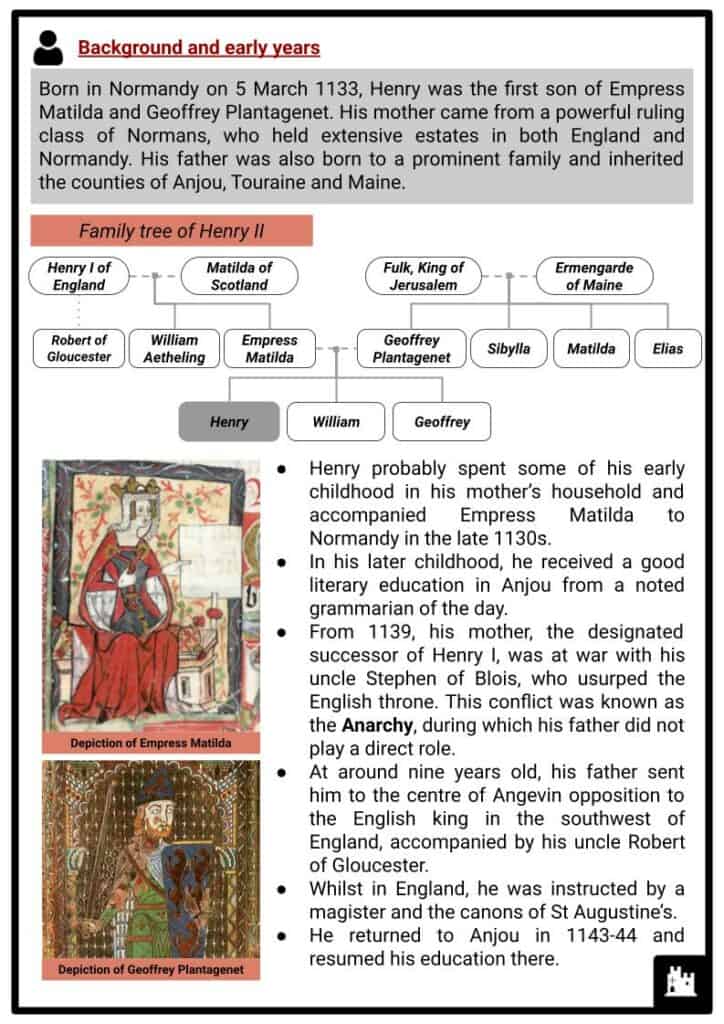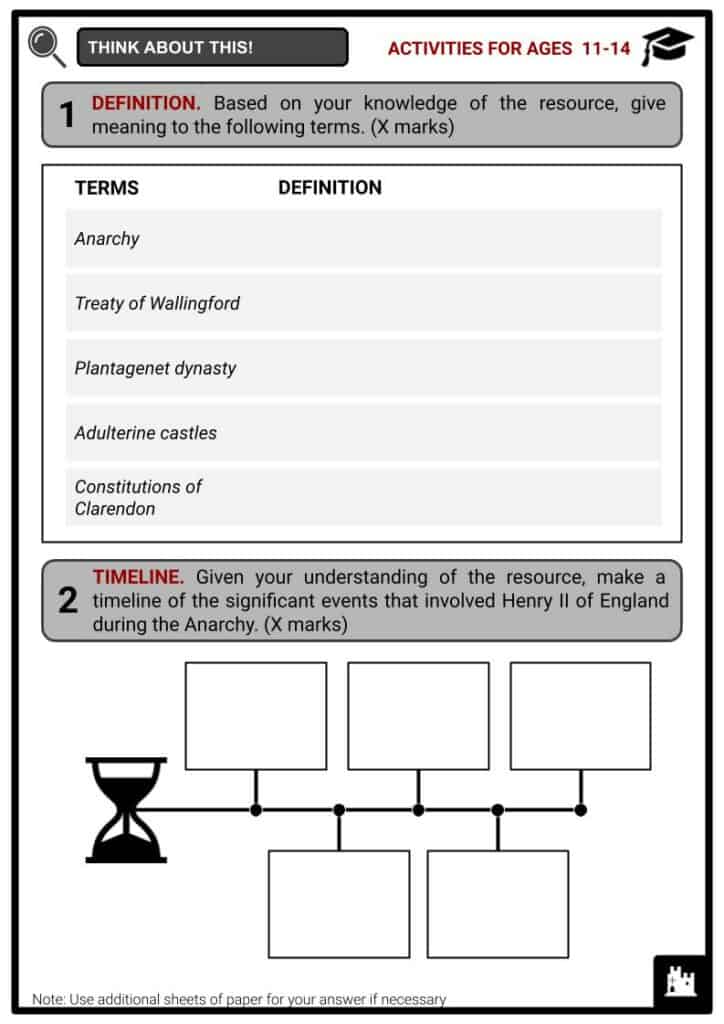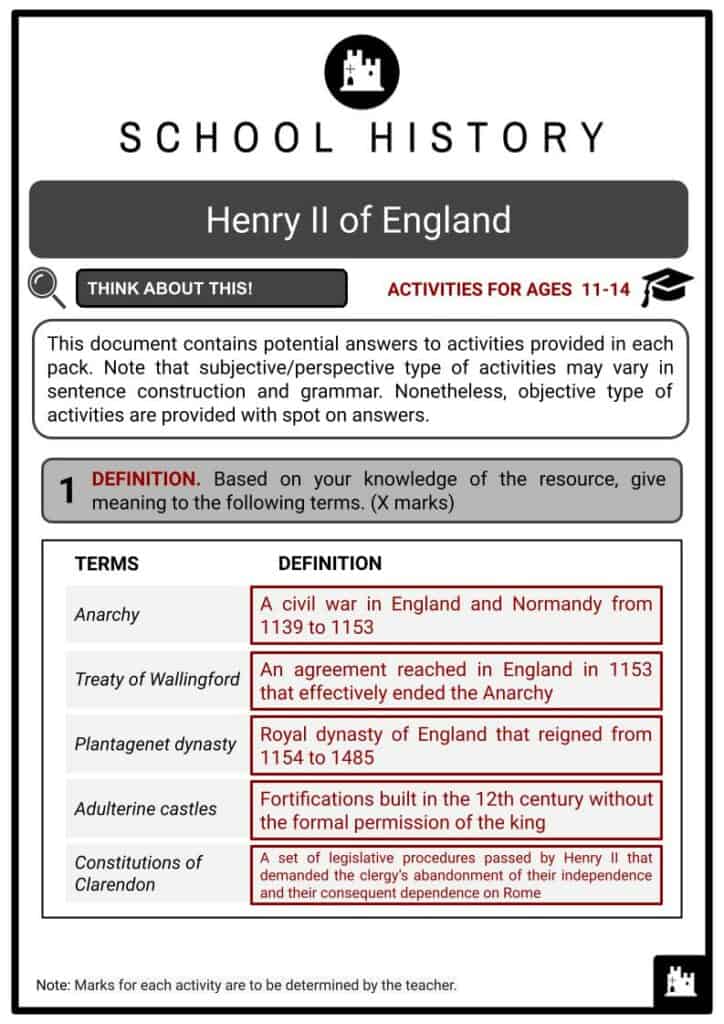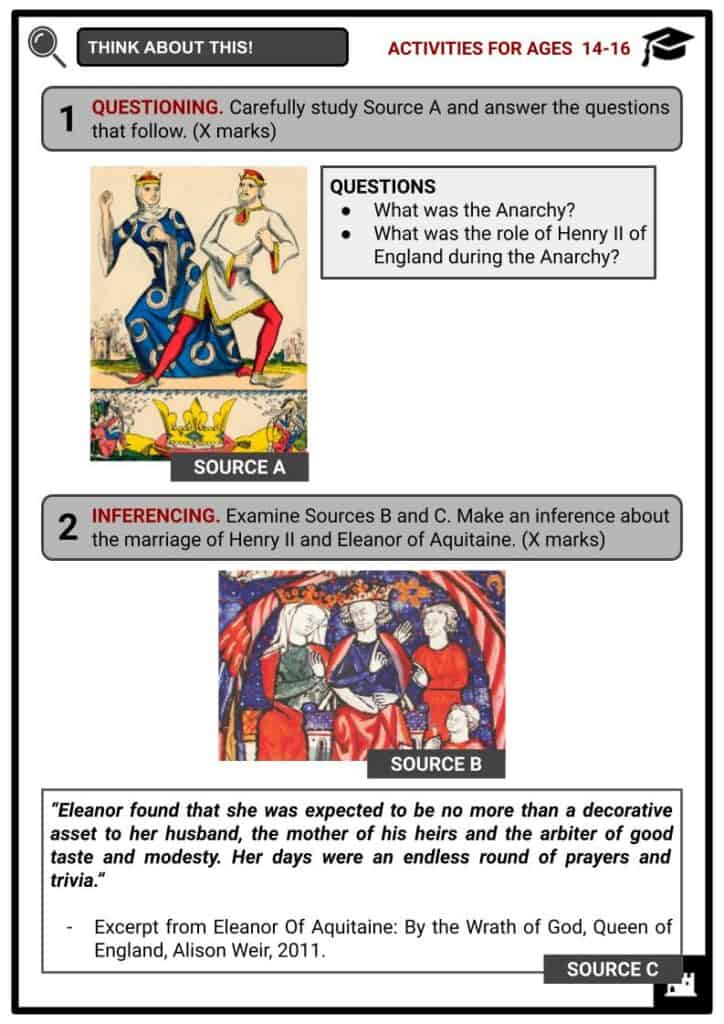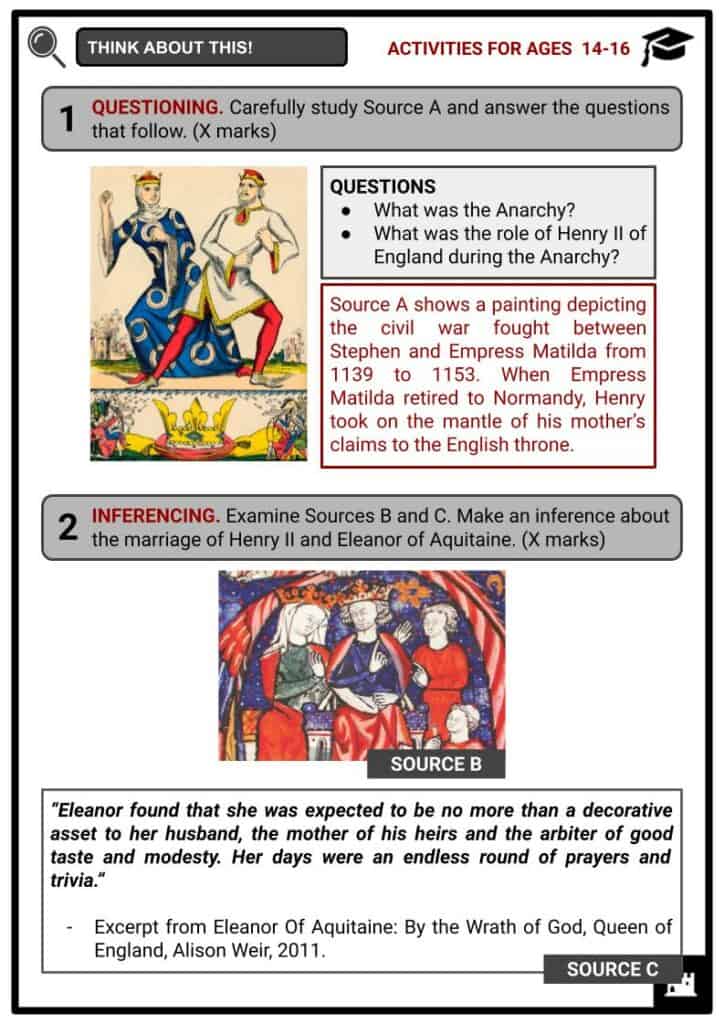Download Henry II of England Worksheets
Do you want to save dozens of hours in time? Get your evenings and weekends back? Be able to teach about Henry II of England to your students?
Our worksheet bundle includes a fact file and printable worksheets and student activities. Perfect for both the classroom and homeschooling!
Summary
- Background and early years
- Final years of the civil war and succession to the English throne
- Reign as king of England
Key Facts And Information
Let’s know more about Henry II of England!
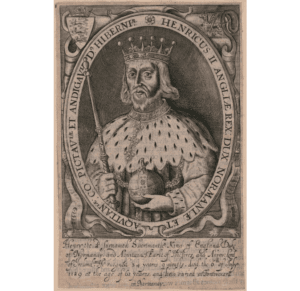
The eldest son of Empress Matilda and Geoffrey Plantagenet, Henry II of England inherited and acquired extensive lands in France. The peace treaty in 1153 that resulted from the Anarchy declared him as the successor to the English throne. He became the first king of the Plantagenet dynasty. Ruling England from 1154 until 1189, he sought to reverse the destruction caused by the civil war and strengthen royal authority and administration in the kingdom. The remarkable accomplishments of his reign were often overshadowed by Thomas Becket’s murder and the rebellions led by his sons and wife.
Background and early years
- Born in Normandy on 5 March 1133, Henry was the first son of Empress Matilda and Geoffrey Plantagenet. His mother came from a powerful ruling class of Normans, who held extensive estates in both England and Normandy. His father was also born to a prominent family and inherited the counties of Anjou, Touraine and Maine.
- Henry probably spent some of his early childhood in his mother’s household and accompanied Empress Matilda to Normandy in the late 1130s.
- In his later childhood, he received a good literary education in Anjou from a noted grammarian of the day.
- From 1139, his mother, the designated successor of Henry I, was at war with his uncle Stephen of Blois, who usurped the English throne. This conflict was known as the Anarchy, during which his father did not play a direct role.
- At around nine years old, his father sent him to the centre of Angevin opposition to the English king in the southwest of England, accompanied by his uncle Robert of Gloucester.
- Whilst in England, he was instructed by a magister and the canons of St Augustine’s.
- He returned to Anjou in 1143-44 and resumed his education there.
- In 1147, Henry returned to England with his immediate household and a few mercenaries.
- He struck into Wiltshire, but his expedition had little success. Additionally, he had limited resources to pay his forces thus was unable to return to Normandy.
- Without the support of Empress Matilda and Robert of Gloucester, who probably had not approved his expedition, he turned to his rival, Stephen, who, for reasons unclear, assisted him in paying the outstanding wages.
Final years of the civil war and succession to the English throne
- By 1149, Robert of Gloucester had died and Empress Matilda had retired to Normandy. Henry took on the mantle of his mother’s claims to the English throne. He sought to form a northern alliance with David I of Scotland and Ranulf of Chester, with the intention to attack York. However, this expedition failed and Henry returned to Normandy.
- In 1150, Geoffrey made Henry the Duke of Normandy. This was contested by Louis VII of France, who claimed that Stephen’s son Eustace was the rightful heir to the duchy.
- In response, Henry agreed to peace with the French king in 1151. In exchange for Louis VII’s recognition of Henry as Duke of Normandy, Henry did homage to the king.
- In late 1151, Henry secured his inheritance following his father’s death, and around the same time, he was perhaps secretly organising his marriage to Eleanor of Aquitaine, wife of Louis VII.
- When Eleanor’s marriage to the king was finally annulled, Henry and Eleanor married in May 1152. This union renewed tensions between Henry and Louis VII.
- By inheritance from his father and marriage to Eleanor, Henry now held a much larger proportion of France than Louis VII.
- Louis VII then organised an alliance with Stephen, Eustace, Henry of Champagne, and Robert of Perche against Henry.
- This coalition was later joined by Henry’s younger brother, Geoffrey.
- Henry’s several territories in France and England faced attacks: along the Normandy borders, Aquitaine and the Wallingford Castle.
- Henry responded quickly and defended his territories in France.
- In response to Stephen’s siege of the Wallingford Castle, he gathered a small army of mercenaries and set out to England in 1153, with the support of Ranulf of Chester and Hugh Bigod.
- He and his allies managed to take control of much of England with little fighting.
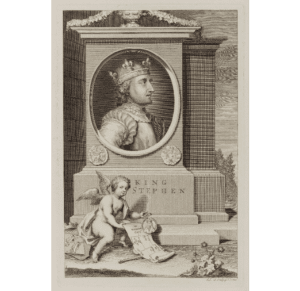
- The barons on both sides were eager to prevent an open battle, so in July a truce was brokered by the members of the Church at Wallingford.
- Eustace was not thrilled by the idea of a truce. However, his sudden death in August was politically convenient for the ironing out of peace in England.
- A more formal agreement was reached and Stephen announced the Treaty of Wallingford, in which:
- Stephen would continue to rule and retain all his royal powers and Henry would be his successor.
- Stephen’s remaining son, William, would do homage to Henry and renounce his claim to the throne, in exchange for promises of the security of his lands.
- Key royal castles would be held on Henry’s behalf by guarantors, while Stephen would have access to Henry’s castles.
- The treaty was sealed with a kiss of peace in the cathedral.
- Despite the peace treaty, the situation in England remained uncertain. Stephen’s son William still posed a threat to Henry’s position.
- In fact, Henry decided to return to Normandy for a period of time, probably due to circulating rumours of a plot to kill him.
- When Stephen died on 25 October 1154 at the local priory in Dover, Henry succeeded to the English throne as Henry II.
- Henry II was the first king of the Plantagenet dynasty that was to rule England for over three hundred years.
Reign as king of England
- Henry landed in England on 8 December 1154 and immediately took oaths of loyalty from some of the barons. He was then crowned alongside Eleanor on 19 December at Westminster Abbey. In the royal court gathered in April 1155, the barons swore fealty to the king and his sons.
- On his ascension, Henry II inherited a kingdom that had suffered extensively during the Anarchy.
- The following were the several issues he countered during his early reign in England:
- Whilst some areas were largely unaffected, the country experienced widespread devastation.
- Many barons seized new lands and erected numerous adulterine castles, or fortifications without the formal permission of the king.
- Many barons also largely ignored royal authority and minted their own coinage during the civil war.
- The system of royal finances established by Henry I was considerably disrupted and the royal income had seriously declined.
- Scottish and Welsh rulers had taken advantage of the civil war and seized disputed lands.
- Spending most of his 35 years of reign in France, Henry II implemented various measures to address the issues in the kingdom:
- He began the process of demolishing the adulterine castles and kept only some stronger castles for himself. New castles could now only be constructed with royal consent.
- He made some efforts to restore the system of royal finances.
- He invested heavily in the construction and renovation of royal buildings.
- He negotiated the return of the lands in the north of England from Malcolm IV of Scotland and reasserted his authority in the west of the kingdom.
- He enacted the Assize of Clarendon, which ensured the law was equally applied everywhere in the country, laying the basis for English Common Law.
- Henry II’s royal authority was further strengthened through the treaties that formally recognised his overlordship over Wales in 1163, Scotland in 1174, and Ireland in 1175.
- His prestige further enhanced when Pope Adrian IV recognised his royal authority over Ireland and the territories that later became Britain.
- Henry II also maintained his interest in France and his continental dominions brought him into conflict with his long-time rival Louis VII, the Holy Roman Emperor Frederick I, and Pope Alexander III.
- Additionally, his political influence in Europe improved through the dynastic marriages of his three daughters.
- Henry II’s remarkable successes throughout his reign were contrasted by the controversies caused by a dispute with his chancellor, Thomas Becket, and by conflicts in his own family.
Thomas Becket controversy
-
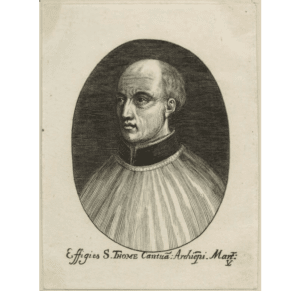
Depiction of Becket Henry II, like all Norman kings, desired to be the absolute sovereign, both of the kingdom and of the Church. Thomas Becket thought he was the right person to defend the king’s interests: therefore, the young chancellor became not only Henry II’s faithful servant, but also the king’s excellent companion and intimate friend. He aided the king in his policy to gain all powers of the monarchy, even when the policy was against the claims of the Church.
- Theobald, Archbishop of Canterbury’s death in 1161 saw the appointment of Becket to the archbishopric in 1163. With this appointment, the king hoped to achieve strict control over the Church.
- However, Becket seemed to have changed his outlook and became a defender of the Church and its tradition. He consistently opposed the king, including the Constitutions of Clarendon that demanded the clergy’s abandonment of their independence and their consequent dependence on Rome.
- His opposition to royal authority meant that he was in considerable danger in the kingdom. Consequently, he voluntarily went into exile in 1164 and took refuge in France.
- Tension between Henry II and Becket proved irreconcilable. In 1170, Becket returned to England when the king allowed him to continue his ministry in the kingdom.
- On 29 December 1170, four Anglo-Norman knights, acting on their own, planned to confront the archbishop on behalf of the king. The knights forced their way into Canterbury Cathedral and cut the archbishop, who refused to be arrested inside the church, with their swords.
- Becket’s murder shocked Europe. Three years later, Pope Alexander III canonised Becket. Whilst papal legates found Henry II innocent of Becket’s death, he had to carry out public penance before the tomb of the archbishop in 1174.
Rebellion of Henry II’s sons and wife
- Henry II and Eleanor had eight children: three daughters and five sons, one of which died in infancy. Whilst their marriage appeared to have been harmonious, by 1167, Eleanor’s relationship with Henry II was strained and the queen decided to move her household to her own lands at Poitiers. Meanwhile, Henry II’s four remaining sons, Henry, Richard, Geoffrey and John, resented the king. Richard went with Eleanor.
- Due to Henry II’s policy of dividing his dominions among his sons whilst reserving real authority for himself, the four brothers began to fight each other and their father.
- In 1173, Henry the Young King, with the aid of Richard and Geoffrey, launched a revolt against Henry II. This came to be known as the Revolt of 1173-74. Eleanor is believed to have encouraged her sons and the barons of the south to rise up and support them.
- Henry II successfully managed the resistance in 1174, leading to Eleanor’s arrest and imprisonment for the next sixteen years.
- In 1183, Henry the Young King attempted again to replace his father. Again, he was unsuccessful and fell ill after fleeing. He died of dysentery thereafter. His death was followed by the beginning of a period of greater freedom for Eleanor. By this point, Richard was the heir to the English throne.
- In 1186, Henry II’s other son, Geoffrey, died in an accident at a tournament.
- Richard’s firm intention to replace his father culminated in another scheme in mid-1189. He joined forces with Philip II of France to pressure Henry II into signing a peace deal. Henry II, now weak and fatally ill, was thus obliged to agree to a complete surrender. He would formally recognise the French king as his overlord, pay Philip II compensation and grant him key castles, and nominate Richard as his heir in England.
- En route to Chinon, Henry II was informed that his youngest son John had publicly sided with Richard. This shocked the king and proved damaging to his health.
- On 6 July 1189, Henry II died and was later buried at Fontevraud Abbey.
- Richard I succeeded to the English throne, thereby ordering the release of his mother, Eleanor.
Image Sources
- https://www.npg.org.uk/collections/search/portrait/mw15011/Called-King-Henry-II?LinkID=mp02139&role=sit&rNo=3
- https://www.npg.org.uk/collections/search/portrait/mw75100/King-Stephen?LinkID=mp04279&role=sit&rNo=18
- https://www.npg.org.uk/collections/search/portrait/mw124084/Thomas-Becket?LinkID=mp64402&role=sit&rNo=3

